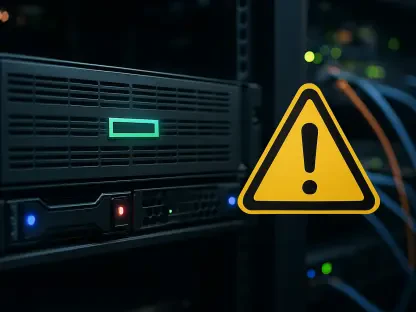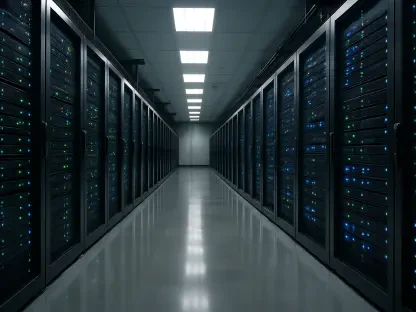In a time of escalating political unrest, an alarming rise in cyberattacks against journalists highlights a precarious intersection of technology and free speech. A report reveals an unprecedented surge in cyber threats, particularly in politically charged regions, underscoring the vulnerabilities faced by media organizations. As journalists navigate an increasingly hostile digital landscape, their critical role in providing unbiased information is under siege, emphasizing the urgent need for robust cybersecurity measures.
Current Landscape of Cyberattacks in Journalism
The journalism industry is confronting an evolving threat landscape, with cyberattacks becoming a formidable challenge. The sector’s significance in delivering critical news and fostering transparency amplifies the need for comprehensive cybersecurity. Organizations like Cloudflare, through initiatives such as Project Galileo, play a crucial role in fortifying these vulnerable entities. By offering free, enhanced security services, they help shield journalism and other noble pursuits rooted in advocacy and transparency.
Cloudflare’s involvement exemplifies how cybersecurity service providers are integral in protecting journalists from increasing digital threats. Various geographical areas show heightened sensitivity to these attacks, particularly where political tensions are rife. Journalism, being a cornerstone of democratic societies, requires formidable protection against frequent digital assaults aimed at disrupting crucial reporting efforts.
Analysis of Rising Cyberattack Trends
Emerging Threats and Technologies
There is a noticeable rise in sophisticated cyber threats specifically targeting journalistic endeavors. Techniques like DDoS attacks and threats to web applications now represent significant risks. These offensive tactics not only disrupt the regular dissemination of information but also compromise the integrity of communication channels that journalists rely on. Moreover, Layer 7 DDoS attacks and vulnerabilities exploited through web application firewalls, including SQL injection and XSS attacks, form a considerable portion of these threats.
Particular cases, such as a substantial attack on the Belarusian Investigative Center, highlight the intensity and concentration of these cyber assaults. Similar incidents illuminate the formidable obstacles caused by this digital warfare, where human-driven attacks create both short-term disruptions and long-lasting repercussions for journalistic entities.
Statistical Overview and Projections
Statistical evidence points to a staggering 241% spike in cyberattacks within a span of less than a year, marking an exponential rise in digital threats. Such data underscores both the vulnerability of journalistic platforms and the increased intensity of cyber threats. The twelve-month tally recorded by cybersecurity providers conveys the urgent need for substantial defenses in this domain.
Projections suggest that these upward trends will likely continue, demanding more advanced strategies to counteract the volatile cyber environment. Various socio-political catalysts, along with evolving threat methodologies, can perpetuate this escalatory pattern unless holistically addressed.
Challenges and Solutions in Protecting Journalistic Integrity
Journalists face numerous challenges in safeguarding their digital ecosystems, with constant threats posing significant risks to their operational integrity. Securing digital platforms becomes increasingly complex as cyber adversaries deploy more sophisticated attacks that aim to destabilize media outlets. The confluence of these challenges requires multi-faceted strategies and solutions to uphold journalistic integrity.
Emerging technologies and refined cybersecurity practices are pivotal in mitigating these risks. Introducing AI-driven threat detection systems and implementing best practices across media organizations can fortify defenses. Additionally, cultivating a sustained focus on cybersecurity training for journalists ensures continued resilience against evolving digital threats, fostering a more secure environment for press freedom.
Navigating the Regulatory Environment
A comprehensive understanding of regulations affecting cybersecurity in journalism is essential for media organizations. Governmental policies and mandates surrounding digital security set the groundwork for compliance requirements that journalistic institutions must meet. Such regulations serve as both a protective framework and a navigational challenge in balancing regulatory adherence with reporting objectives.
The implications of these regulatory environments necessitate adaptable approaches that align with compliance but also reinforce security frameworks. Strategies for adhering to these requirements can involve collaboration with cybersecurity experts, setting robust protocol standards, and enhancing internal policies to reflect an embedded commitment to regulatory compliance.
The Future of Cybersecurity in Journalism
The future of cybersecurity within journalism is set to evolve with adaptive technologies and innovative solutions that address burgeoning threats. As the digital landscape shifts, predicting and preparing for potential disruptors will become a strategic imperative for media organizations. This future-oriented approach will help identify and neutralize threats before they culminate into serious breaches.
Anticipating advancements in cybersecurity innovations could see the creation of resilient infrastructures that both withstand cyberattacks and uphold journalistic excellence. Forward-thinking strategies that incorporate cutting-edge technologies ensure that journalistic entities remain bastions of unbiased reporting amidst turbulent times.
Conclusion and Recommendations
In light of the staggering increase in cyber threats aimed at journalists, reinforcing cybersecurity is not merely a preventive measure but an essential priority. Stakeholders within the media industry must commit to enhancing defenses against these pervasive threats. Investment opportunities in cybersecurity solutions present a chance for stakeholders to not only support but also protect the integrity of journalism, thereby safeguarding one of democracy’s most vital pillars.
Looking ahead, the coordination between cybersecurity providers, media organizations, and regulatory bodies is crucial in establishing proactive countermeasures. By fortifying defenses now, journalistic entities can better anticipate and endure the challenges posed by an evolving cyber landscape, ensuring that their mission to deliver unbiased and truthful information remains unimpeded.









